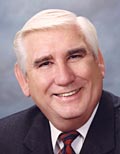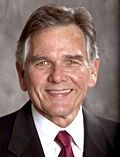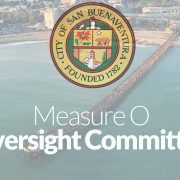Is Leadership Scarce In Ventura? The Censure Farce Suggests Yes
The Move To Censure Turns To Tragedy
VREG has been silent for six months. City Hall decisions have been hard to reconcile and easy to criticize, so we have held off joining in on the fray. It is difficult not to write about what has been happening with our City government, but as we explain below it has all the makings of a modern Shakespearean tragedy.
New City Council
In December 2022, voters elected three new City Council Members, Jim Duran, Liz Campos and Bill McReynolds. We will reserve the temptation to comment on their talents or lack thereof. Still with these three joining the other four (voters elected Jeannette Sanchez-Palacios after she was appointed to fill a prior vacancy, Joe Schroder, Mike Johnson and Doug Halter), the longest tenure of any of them is just over two years.
The historical knowledge of this group is limited to their personal experience, with little regard for past governmental actions. Some declare a ‘lifelong’ familiarity with ‘all things Ventura,’ but overseeing city politics from an elected city council perspective is far different from being a citizen. The most significant gap is understanding the difference between being in a ‘board of director role,’ as an elected council member, versus being a ‘department head, manager or even a CEO of a company.’ The first lesson they need to learn and accept is that the city council only hires two people for advice on the everyday management of our city, the City Manager and the City Attorney.
As City Councilmembers, they are not HR directors and do not micro-manage staff, city departments or budgets. The role of a council member is to set policy, direct procedures and, in some cases, make laws when necessary.
Councilmembers Unclear On Roles
 The greatest surprise is that the staff does not work for the City Council. Councilmembers must understand that the staff answers to their supervisors and, as is human nature, will not jeopardize their position, supervisor or job if it is avoidable. And, to make matters worse, the staff may have budgets and goals contradictory to the public and the elected officials.
The greatest surprise is that the staff does not work for the City Council. Councilmembers must understand that the staff answers to their supervisors and, as is human nature, will not jeopardize their position, supervisor or job if it is avoidable. And, to make matters worse, the staff may have budgets and goals contradictory to the public and the elected officials.
The staff can access details and information the City Council needs to make decisions or set policies. Yet, the staff is not the only source of information available to the City Council. Our elected officials must be truthful and ask tough questions about budgets, expenses, staffing, project deadlines, and other options before making decisions. No staff member has ever told the Council, ’We can cut our budget and staff and provide better efficiency with less.’ Again, the role of a Councilmember is to set policy, direct procedures and, in some cases, make laws. The Council cannot do that properly without being provided with all the options unbiasedly.
This concept of questioning or challenging staff information has led to dysfunction at City Hall for the last six months.
By observation, the City of Ventura is a wasteland regarding leadership. Recent Councilmembers have needed to be more experienced in their leadership roles. There has not been a permanent City Manager for over six months. During that time, several department heads were placed on leave or terminated. Most recently, there has also been an attempt to censure an elected Councilmember. All this while the new Mayor says that the city is in great shape with a ‘deep bench’ of staff, and another Councilmember says this is the best group of Councilmembers ever.
To Censure or Admonish Another Council Member?
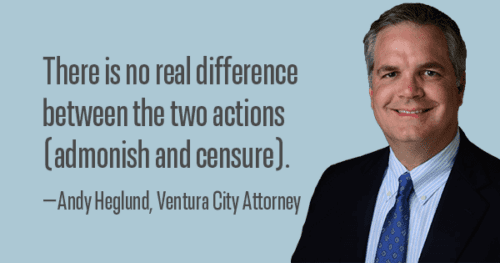
Censure was the question before the City Council during a 5-hour special meeting. Notably, the City Attorney, who makes a living defining words, told the Ventura County Star there was no real difference between these two actions.
We beg to differ and refer to Mr. Webster. To admonish is ‘to warn or reprimand someone firmly’ while censure is ‘to express severe disapproval, typically in a formal statement.’ Without taking sides in this debate, it finally came down to a Council member using the wrong ‘tone’ with a staff member in an effort to obtain the information he wanted to do his job as an elected official for the benefit of the community.
When we asked some individual Council Members about the outcome of the meeting, one expressed that they wanted to take away the specific committee assignments for which the accused Councilmember received a ‘meeting stipend.’ This reply sounds purely punitive and more like retribution. The investigation may have been an indictment of something wrong, but it was never a legal judgment and certainly not conclusive of any wrongdoing. Judging their peers is not the role of a Councilmember. All seven need training in what their roles are.
Plenty of Blame to Go Around
 We do not need the details of the HR complaint to comment on the actions of the Councilmembers. We know that the Mayor, City Attorney and City Manager (interim) were present and either did not witness or did not see fit to deal with the purported infraction when it occurred. Even the current City Councilmembers, in a very diplomatic way, did not see fit to question, deflect or detour the questionable ‘exchange.’ The Council and staff focused on the complaint and Mr. Johnson, but somehow there was no further discussion about the fact that eight other members on the dais were present when the ‘offense’ allegedly occurred. Instead, this becomes a 5-hour discussion that looks more like a ‘gang attack’ on one council member. We make no excuses for what may or may not have occurred. Yet, if something did happen, everyone present needs to share in the guilt.
We do not need the details of the HR complaint to comment on the actions of the Councilmembers. We know that the Mayor, City Attorney and City Manager (interim) were present and either did not witness or did not see fit to deal with the purported infraction when it occurred. Even the current City Councilmembers, in a very diplomatic way, did not see fit to question, deflect or detour the questionable ‘exchange.’ The Council and staff focused on the complaint and Mr. Johnson, but somehow there was no further discussion about the fact that eight other members on the dais were present when the ‘offense’ allegedly occurred. Instead, this becomes a 5-hour discussion that looks more like a ‘gang attack’ on one council member. We make no excuses for what may or may not have occurred. Yet, if something did happen, everyone present needs to share in the guilt.
Making the situation even more absurd was the City Attorney’s unilateral decision to hire an outside law firm for $75,000 to investigate the impropriety of one of his bosses.
Waiting for the Next Shoe to Drop
During the 5-hour discussion about censoring or admonishing Council Member Johnson, some members stood on three moral high ground standards:
- ‘Zero tolerance’ for bullying.
- Elected officials should hold themselves to a ‘higher standard’ of conduct than the ordinary citizen.
- Even the ‘perception’ of disrespecting a staff member was severe enough to take action.
At this point, Councilmember, Liz Campos, stated publicly that her fellow Councilmembers disrespected and belittled her (2:25:08 to 2:28:28) in a closed session, with both the interim City Manager and City Attorney present.
Surprisingly, nobody commented on this statement. When will this investigation begin? Will the City Attorney contract another outside law firm to investigate Ms. Campos’ claims, and what will that cost the citizens?
And, given the three moral high ground standards set forth earlier in the meeting, there should have been four resignations from the four Councilmembers claiming that higher ground. Yet, there weren’t. If those four Councilmembers are to be true to their beliefs and to not be hypocritical, we expect four resignations when the investigation begins.
Editors Comments

We, as citizens, should be disappointed and embarrassed. The Shakespearean quote above is apropos. It means goodness is bad, and badness is good.
Councilmembers and staff need to stop patting each other on the back for doing a good job when it is their job to perform their work and fulfill their assignments and quietly accept that a Councilmember might be verbally critical if they do not do their job.
What should the citizens of Ventura be entitled to expect? Hire a City Manager to manage our affairs and help the Council through decision-making. As for the City Attorney, he will always warn that the city can be ‘sued,’ but the possibility of a lawsuit cannot be the overriding reason for the Council to vote a certain way. The City Attorney’s job is to “advise” and help on legal matters. A City Manager’s job is to help the council stay focused on their roles and priorities.
City Council’s priorities are budgets and safety. It is not to accept all staff reports and recommendations at face value. City Council’s job is to question, challenge and determine the best use of the citizens’ money. It is not to be the cheerleader to all staff members or to accept every report and recommendation staff presents. The City Council is the last safeguard to protect the citizens against wasteful spending. Nobody recalls a time when the staff has reduced their budget or lowered their personnel count. While asking questions, one person’s inquiry may appear to be another person’s assertiveness or aggression. Answering Council’s questions is a large part of the staff’s job.
While other communities are trying to address housing, traffic, economic issues and crime, Ventura is squabbling and spending time pointing fingers and punishing each other.
You don’t like our tone? Is the message too harsh? Too bad. Get over it.
Tell The City Council To Focus On Their Job
Below you’ll find the photos of our current City Council. Click on any Councilmember’s photo and you’re email program will ready to write directly to that Councilmember.
Let them know what you’re thinking. Tell them what they’re doing right and what they could improve upon. No matter what you write, however, share your opinion. Participating in government makes things better because our city government is working for all of us.
 |
 |
|
 |
 |
|
 |
 |
|
 |
For more information like this, subscribe to our newsletter, Res Publica. Click here to enter your name and email address.





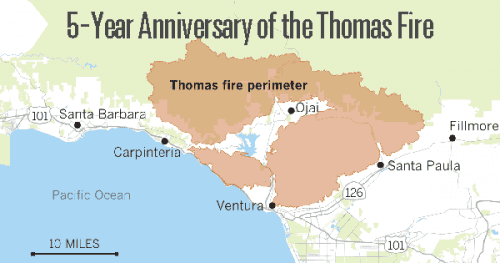
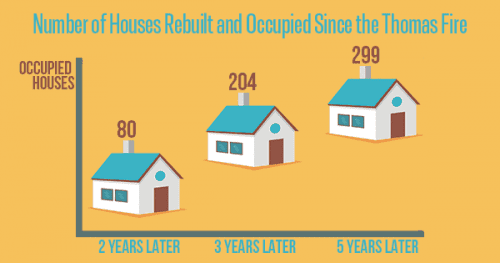








 “
“
 In 2020, the city implanted a program named Main Street Moves to allow businesses hurt by the pandemic shutdown to serve limited customers outdoors. Forty-seven businesses applied for outside operating permits under the program. Mayor Rubalcava gave an update on business operating permits. By June 2021, the number of companies requesting outside operating permits was 51. Most of the credit for those accomplishments belongs to those implementing them in the prior year.
In 2020, the city implanted a program named Main Street Moves to allow businesses hurt by the pandemic shutdown to serve limited customers outdoors. Forty-seven businesses applied for outside operating permits under the program. Mayor Rubalcava gave an update on business operating permits. By June 2021, the number of companies requesting outside operating permits was 51. Most of the credit for those accomplishments belongs to those implementing them in the prior year. Long-range planning like this is a fool’s errand. Nobody can look in the future to see what Ventura will need, let alone look 10-15 years in the future. It’s harder still for a 22-person committee. What committee could have predicted the Thomas Fire, the pandemic, Anthony Mele’s murder, and the business shut?
Long-range planning like this is a fool’s errand. Nobody can look in the future to see what Ventura will need, let alone look 10-15 years in the future. It’s harder still for a 22-person committee. What committee could have predicted the Thomas Fire, the pandemic, Anthony Mele’s murder, and the business shut?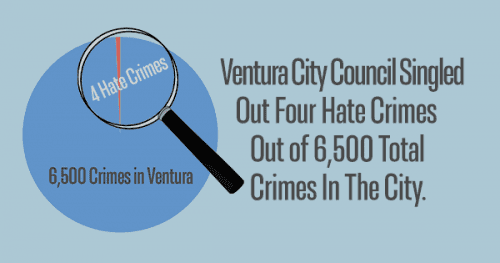 Mayor Rubalcava spent a good portion of her address describing Ventura Police and Hate Crimes. Several things about that were troublesome. First and foremost, she spent all that time talking about four instances in 2020. While hate crimes have received a great deal of national publicity, four out of 6,500 crimes locally in 2020 is a minuscule number of cases to be singled out and dramatized.
Mayor Rubalcava spent a good portion of her address describing Ventura Police and Hate Crimes. Several things about that were troublesome. First and foremost, she spent all that time talking about four instances in 2020. While hate crimes have received a great deal of national publicity, four out of 6,500 crimes locally in 2020 is a minuscule number of cases to be singled out and dramatized. An opportunity exists for the City Council to demonstrate genuine leadership. The results of the last two elections have delivered an
An opportunity exists for the City Council to demonstrate genuine leadership. The results of the last two elections have delivered an 





 The most practical option available to the Council was to appoint a replacement. Four of the Councilmembers didn’t want to wait for a special election in November 2021. Nobody wanted to wait until November 2022 to fill the vacancy because of the concern about not having a seventh vote to break any tie vote.
The most practical option available to the Council was to appoint a replacement. Four of the Councilmembers didn’t want to wait for a special election in November 2021. Nobody wanted to wait until November 2022 to fill the vacancy because of the concern about not having a seventh vote to break any tie vote.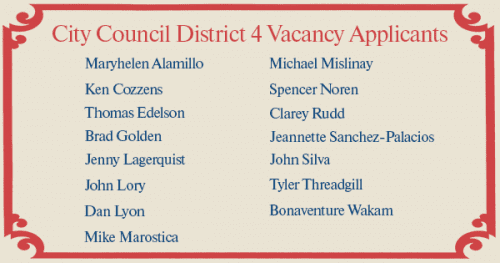
 The logistics of the procedure are grueling for both the applicants and the City Council. Interviewing all fifteen candidates in one sitting will be wearisome. It’s hard to imagine that the Councilmember’s attention will be as sharp at the end of the day as it was in the beginning.
The logistics of the procedure are grueling for both the applicants and the City Council. Interviewing all fifteen candidates in one sitting will be wearisome. It’s hard to imagine that the Councilmember’s attention will be as sharp at the end of the day as it was in the beginning.





 Then something happened in the city staff presentation that further demonstrated how they lack the knowledge and experience to guide the City Council on rental properties. The Public Works presenter hinted a possible tenant would take the space and finance the tenant improvements in exchange for significantly reduced rent. Almost immediately, Jeff Lambert, the Community Development Director, corrected that information. The potential new tenant had pulled out earlier that week. There were no interested parties, at this time. It was apparent these two departments were not communicating, and the facts were not straight before asking the City Council to spend $2 million.
Then something happened in the city staff presentation that further demonstrated how they lack the knowledge and experience to guide the City Council on rental properties. The Public Works presenter hinted a possible tenant would take the space and finance the tenant improvements in exchange for significantly reduced rent. Almost immediately, Jeff Lambert, the Community Development Director, corrected that information. The potential new tenant had pulled out earlier that week. There were no interested parties, at this time. It was apparent these two departments were not communicating, and the facts were not straight before asking the City Council to spend $2 million.